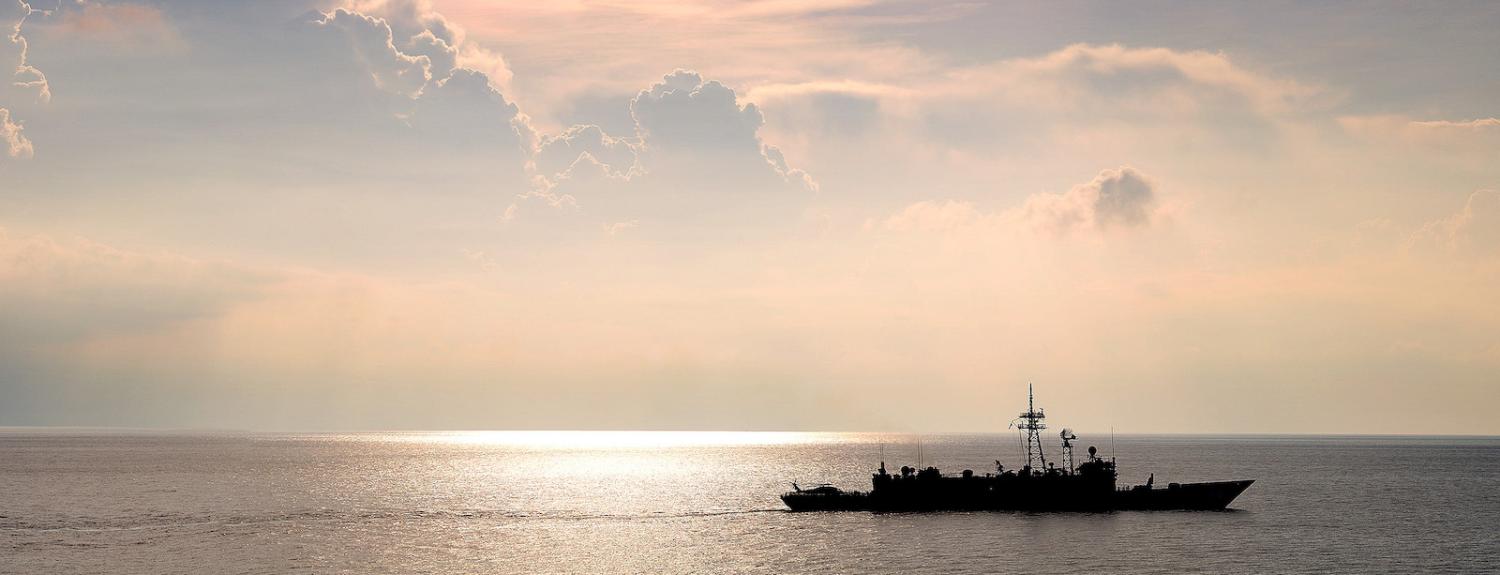The Royal Australian Navy is about to take two highly capable guided missile frigates out of service. But they are not just surplus equipment, but they are important strategic assets that Australia can use for continuing strategic benefits. We should think seriously about giving them to our strategic partners to enhance their and our own security.
Later this year, Australia’s last two Adelaide class frigates, the 4,000-ton HMAS Newcastle and HMAS Melbourne, are due to be retired as part of the modernisation of the Australian fleet. The ships are the last of six of their class, commissioned in 1992 and 1993 and upgraded in the mid-2000s. They are well maintained, multi-role warships, armed with missile launcher, a 76mm gun and torpedo tubes for anti-submarine warfare (ASW).
The RAN has good reasons to retire the Newcastle and Melbourne in order to free resources for new vessels coming on line, including the Hobart class destroyers. But for many navies in our region they would represent high-end capabilities.
What should we do with them? Other frigates of the Adelaide class have either been sold for scrap metal (HMAS Sydney) or sunk as dive wrecks (HMAS Canberra and Adelaide). Dive wrecks may be good for tourism, but they also require expensive preparation so that they don’t become an environmental or safety hazard.

The fate of the Newcastle and Melbourne is uncertain and there have been efforts to sell them. Some potential European buyers, including Poland and then Greece have kicked the metaphorical tyres, but these deals seem unlikely.
There is a danger that the ships will be regarded just as surplus equipment. Rather, they can strategic value for Australia for years to come. If Australia can no longer use them there are plenty of regional partners who could.
Australia has several security partners in Southeast Asia (both long-standing and new) that could use these assets to help secure waters that are important to Australia. Closer to home, New Zealand is now without any functioning frigate even as concern over strategic competition among Pacific islands grows. Even when its two ANZAC frigates come out of refits over the next year or two, New Zealand will require more ships if it is to remain a serious security player in the Pacific.
Transferring the frigates would provide significant political and security benefits, but certainly would not come without costs.
The Indian Ocean is also increasingly in play, forcing Australia to pay much more attention to building security partnerships there. One valuable and growing security partnership with Sri Lanka which holds a pivotal strategic location in the northern Indian Ocean. Its navy is small but highly professional and it urgently needs to expand its capabilities.
Australia’s interests in Sri Lanka’s maritime security is nothing new. Indeed, the gift of two Bay Class offshore patrol vessels to Sri Lanka in 2014 was a highly successful example of Australia using retired warships for mutual benefit. Australia was then at the receiving end of people and drug smuggling operations out of Sri Lanka. The gift of the offshore patrol vessels, along with sustained engagement by the Australian Federal Police and Border Force, led to a close security partnership between the two countries that successfully shut down these operations. It is a model of how enlightened self-interest can, in the right circumstances, improve the security of the region and Australia.
But after five years there is now a risk that people smuggling from Sri Lanka will resume. In May, the Australian Border Force intercepted a boat load of some 20 people headed for Australia. They were landed briefly on Christmas Island before being quickly flown back to Colombo with a modicum of fuss. Home Affairs Minister Peter Dutton quietly visited Colombo earlier this month in an effort to head off another possible round of maritime arrivals. Clearly there is value for Australia in consolidating and building the relationship.
The transfer of the Newcastle or Melbourne would be a game changer for the Sri Lankan navy, giving it blue water capability to police its large economic exclusion zone and huge search and rescue zone. It would also give Sri Lanka a relatively sophisticated ASW capability – importantly one that could be used in partnership with the Australian navy.
But giving a frigate to Sri Lanka (or another regional partner) would come with some big ifs. The most important would be a judgement that Sri Lanka would be willing to make a long- term commitment to properly sustain and use the platform. They are expensive and sophisticated assets that require considerable training and maintenance. We would certainly not want to see them underused or, perhaps even worse, draining the Sri Lankan navy’s resources away from other important missions.
Second, Australia would need to make the long-term commitment to support the Sri Lankan navy. Inevitably any transfer, particularly of a sophisticated ASW capability, would require significant and sustained training. This of course could also enhance Australia’s influence. In other words, transferring the frigates would provide significant political and security benefits, but certainly would not come without costs.
Whether or not these conditions might be met in the case of Sri Lanka, the principle remains. The Adelaide class frigates are not just surplus equipment to be scrapped or sold to the highest bidder. They are strategic assets and, even if they are not in the hands of Australia, they can play a valuable role in Australia’s security for many years to come.

